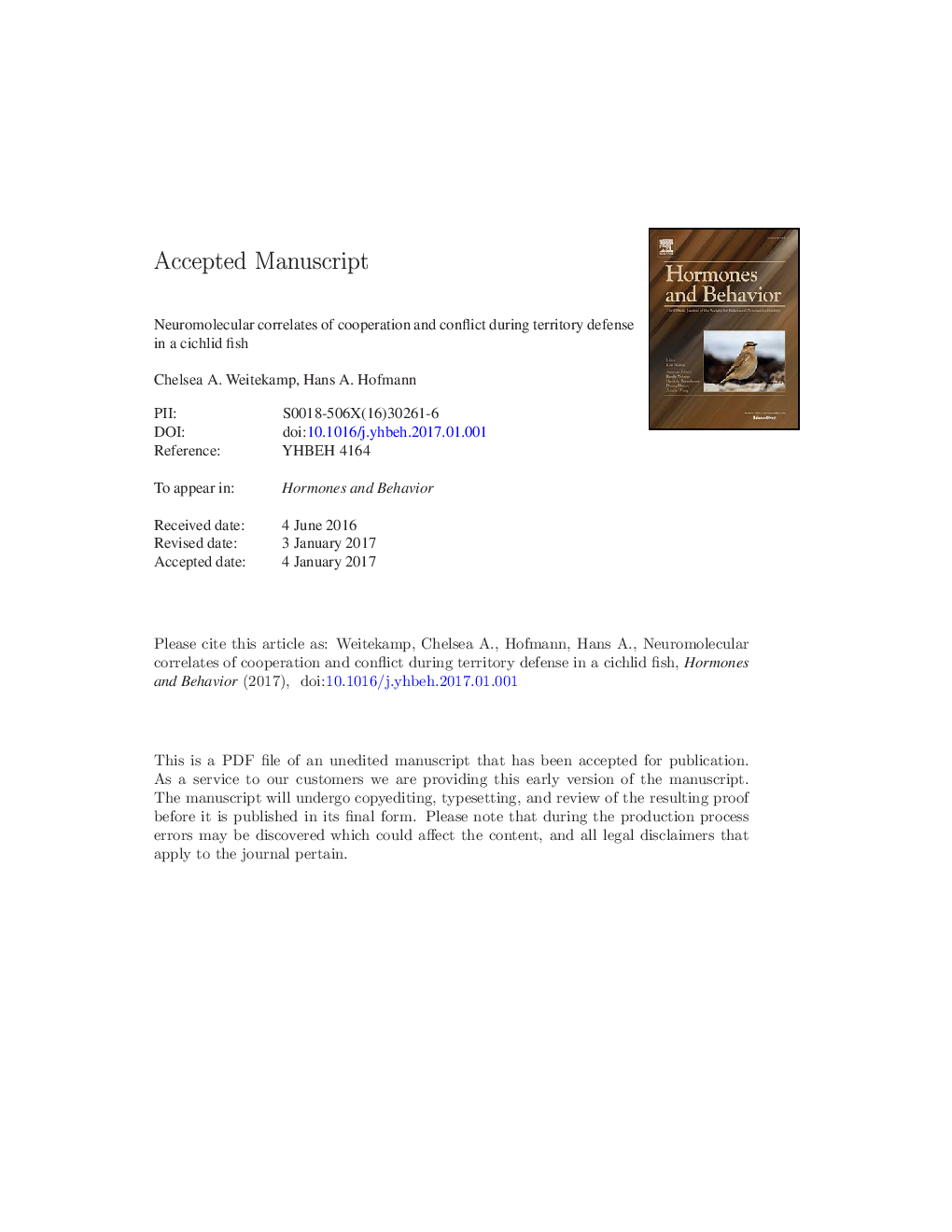| Article ID | Journal | Published Year | Pages | File Type |
|---|---|---|---|---|
| 4931185 | Hormones and Behavior | 2017 | 52 Pages |
Abstract
Cooperative behavior is widespread among animals, yet the neural mechanisms have not been studied in detail. We examined cooperative territory defense behavior and associated neural activity in candidate forebrain regions in the cichlid fish, Astatotilapia burtoni. We find that a territorial male neighbor will engage in territory defense dependent on the perceived threat of the intruder. The resident male, on the other hand, engages in defense based on the size and behavior of his partner, the neighbor. In the neighbor, we find that an index of engagement correlates with neural activity in the putative homolog of the mammalian basolateral amygdala and in the preoptic area, as well as in preoptic dopaminergic neurons. In the resident, neighbor behavior is correlated with neural activity in the homolog of the mammalian hippocampus. Overall, we find distinct neural activity patterns between the neighbor and the resident, suggesting that an individual perceives and processes an intruder challenge differently during cooperative territory defense depending on its own behavioral role.
Keywords
Related Topics
Life Sciences
Biochemistry, Genetics and Molecular Biology
Endocrinology
Authors
Chelsea A. Weitekamp, Hans A. Hofmann,
